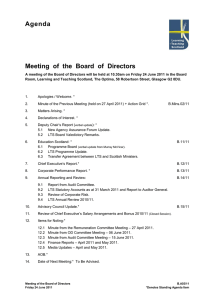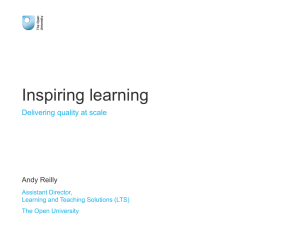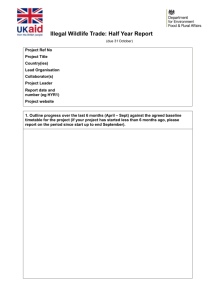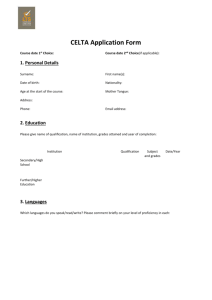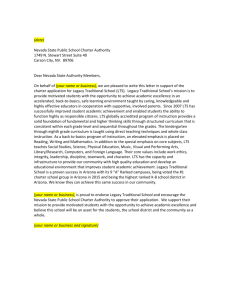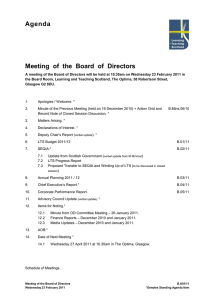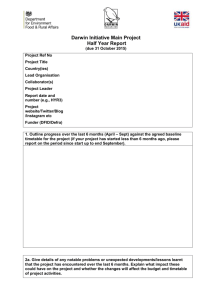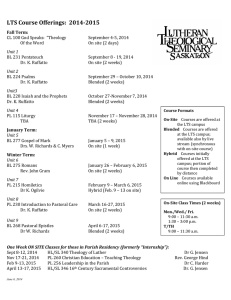U.S. Submarine Attack Crew Needs Assessment Dr. Steve Training & Development
advertisement
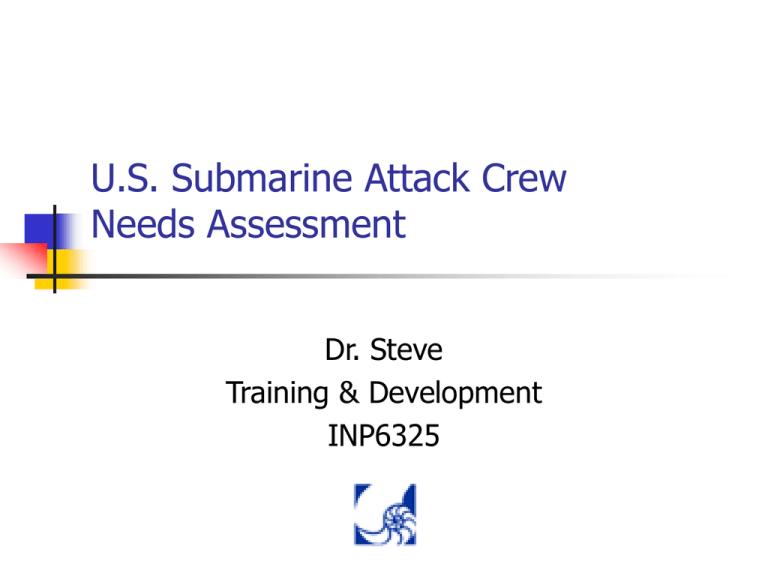
U.S. Submarine Attack Crew Needs Assessment Dr. Steve Training & Development INP6325 Background U.S. Navy contracted our group to do a needs assessment for attack center crews aboard ballistic missile (Trident) submarines All data collected at Trident Training Facilities (TTF), Bangor, WA, and Kings Bay, GA. No data is reported here (sensitive or classified), only procedures As with all needs assessments, had to work within the constraints of the organization rather than following the exact procedures outlined in the book. 1. Establish Organizational Support Organizational support Made friends with CO of submarine school house Talked about what his job is, who works for him, role of the schoolhouse, and typical work week CO put us in contact w/group of LTs (trainers) Made sure to get their perspective on what they do, services they provide, etc. Formed a team consisting of 2 LTs, CO, subcontractor, myself Made sure we were all on the same team 2. Organizational Analysis Interviews Documents Talks with LTs to find out what they train, what trainees should be able to do, how trainees are judged as well as how trainers are judged Read thru NWPs describing training that is conducted at facility Observations Toured schoolhouse facilities to see all different training Dive training (angles & dangles) Fire fighting Flood (get wet) trainer Sonar Attack Center simulator 2. Organizational Analysis Determined that we could make greatest impact in the attack center (boat’s brain) Other areas mostly taught technical skills which trainees already learned just fine. Attack center most complex part of boat Attack center relied on greatest variety of skills Communication, coordination, and teamwork were critical CO and LTs believed that trainees lacked “big picture” If could develop teamwork training for most complex part of boat, could likely modify for other parts 2. Organizational Analysis Identify external / internal constraints Time – working on 6 week schedule of training events, so completed training program had to fit in that timeline Military specs – must meet specific standards Rotating CO – had to complete project before CO left for re-assignment Curriculum – must not interfere with other curriculum Attitudes – “old way is the best way” Hierarchy – Senior officers are trained by LTs and are not likely to take criticism well Goal – help develop “big picture” in crew members and allow LTs to train entire crew 3. Requirements Analysis Train the Trainers Determined that training would be given to all trainers Would prove concept on trainers (LTs) in attack center Developed structured questions for LTs Went over current curriculum plan to see how new training could be incorporated Conducted observations (myself & subcontractor) Observed attack center simulations examining roles and interactions of CO, XO, nav plot, ESM, periscope assistant, helm, weapons officer, time-freq plotter, etc. (25-30 crewmen in all) After first observation made changes to protocol due to difficulty of observing such a large crew 4. Needs Assessment Components Task Analysis – identified tasks through: Documentation – NWPs and curriculum Interviews with LT’s (no access to crew members) Observations – attack center missions and debriefs Link Analysis – observations of frequency, not content, of communications among crew members Determined what KSAs were necessary Task Statements and KSAs rated by LTs & a Sr. Chief who does team training 4. Needs Assessment Components Goals Noted through observations that individual crew members often had correct solution but did not pass it on to other crew members Why not? “didn’t ask,” “wasn’t sure,” etc. Determined target training: Communication transfer skills 5. Person Analysis Determined that junior officers could benefit most. Unlikely to change CO & XO behaviors, but had to start somewhere that would make an impact CO’s and XO’s agreed The way to accomplish this was to train the trainers (LTs) that train junior officers as well as Captains (usually CO) and Commanders (usually XO) 6. Results Developed training program targeted at training the trainer (schoolhouse LTs) to teach communication skills such as how to: Provide clear, specific information Anticipate information from crew members Brief, but unambiguous Where should necessary information come from Differentiate commands from statements Use proper litany
